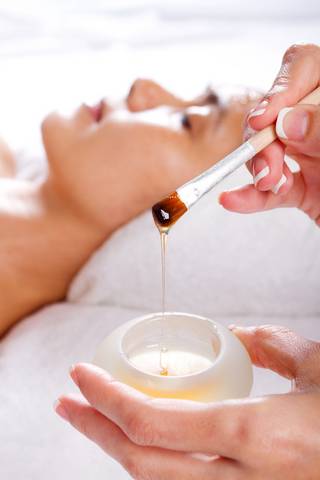Honey has been used for eons as a cure for an assortment of maladies. Its antibacterial properties are undisputed. Its skin benefits are renowned. The big question is why should someone use manuka honey? What are the unique benefits of manuka honey that make it special?
Being the science junky that I am, I decided to check out the research data.
Evidently, most of the research into the specific benefits of manuka honey has been done by Professor P. C. Molan at the Honey Research Unit, University of Waikato, Hamilton, New Zealand.
Here at SpaFromScratch we don’t like hype. Therefore, we spend a lot of time in the trenches doing research. This post on the benefits of manuka honey is to share with you a summary of what we discovered.
What is manuka honey?
The manuka bush (Leptospermum scoparium) grows wild in New Zealand and Australia. Manuka honey comes from the bees that make their honey from this bush.
Are the benefits of manuka honey exclusive to bees gathering pollen from the manuka bush?
No. The same properties are found in “jellybush” (Leptospermum polygalifolium ) honey. In addition, there may well be other kinds of honey out there, but to date that is unknown. However, the research is more extensive and a grading system has been developed for manuka honey. The benefits of manuka honey are based on the concentration of its unique chemistry as well as what it has in common with all other bioactive kinds of honey. Note: Heat destroys many of the therapeutic benefits of honey.
What are the unique benefits of manuka honey?
What I gleaned from the research data, it appears that it takes substantially less manuka honey to treat fungal infections of the skin and the bacteria associated with ulcers (Helicobacter pylori). In addition, the unique chemistry of ‘active manuka honey’ makes it more stable.
What are the unique properties that add to the benefits of manuka honey?
Now things get sticky (so to speak) because methylglyoxal is the only unique active ingredient that has been identified thus far. The main antibacterial activity of most honey, including manuka honey, comes from the release of hydrogen peroxide. However, methylglyoxal is a more stable than hydrogen peroxide which apparently has advantages. This is the unique constituent that is responsible for the added benefits of manuka honey. (Identification and quantification of methylglyoxal as the dominant antibacterial constituent of Manuka (Leptospermum scoparium) honey from New Zealand. Molecular Nutrition and Food Research 2008;52(4):483-489)
Is all manuka honey the same?
No. Some manuka honey does not contain much if any methylglyoxal or any other unique ingredients. For this reason, there is a grading system to let you know the potency of the manuka honey you buy. The potency factor has been dubbed ‘Uniquie Manuka Factor’ (UMF). Manuka honey potency is tested against phenol against Staphylococcus aureus. Here’s how it works. If S. aureus in a 15% solution is the same as the manuka honey sample being tested, the UMF is 15. The higher the UMF, the more potent the manuka honey.
Is manuka honey safe?
There are no known problems using manuka honey. That said, if you have diabetes you should consult your physician before using manuka honey. If your doctor is not familiar with manuka honey, s/he may not be aware that it contains methylglyoxal.
Does manuka honey taste good?
Manuka honey has a unique flavor that I like. However, some of you may not care for it. The only way to tell for sure is to purchase a small jar or steal a taste from a friend who has it on hand.
What are the best uses for manuka honey?
There are many benefits to any good quality raw honey; however, there are specific benefits of manuka honey.
- I would definitely take a 15 or higher UMF if I had an ulcer, colitis or other gastrointestinal problem.
- I would definitely use a minimum UMF 12 or higher if I had a wound that needed healing. The manuka honey for this would be a sterile product such as Medihoney wound paste (the only FDA approved Manuka honey product).
- I would definitely use a minimum of UMF 12 manuka honey in creams, lotions and salve recipes that call for honey.
Conclusion
Now we ask the million dollar question. Should we use manuka honey in our creams and lotions? The answer: Yes and no. I personally wouldn’t buy manuka honey over any other raw honey if it didn’t have a UMF rating. However, I would definitely have on hand ‘Active Manuka Honey’ because I would have more confidence in its stability and its antibacterial activity. I believe the added benefits of manuka honey make it worth the investment as long as it had a UMF rating of 12 or higher. In the meantime, I am keeping my eyes open for a competing honey to appear.
Related posts and sites:
If you’re also a science data junkie you can review the data on manuka honey at http://bio.waikato.ac.nz/pdfs/honeyresearch/bioactives.pdf. (Note: funding for research is provided by the honey industry.)
The Best Colloidal Oatmeal Mask – Here you can find a list of the benefits of raw honey.
Homemade Acne Treatments That Work – I would use UMF 15 or higher manuka honey to ensure appropriate antibacterial action.

